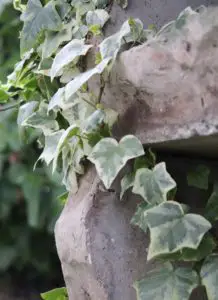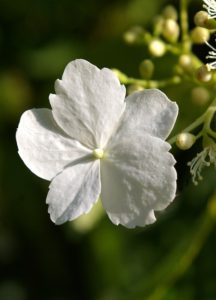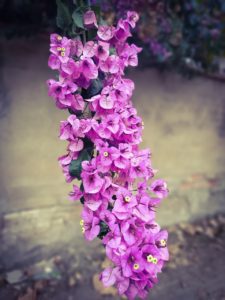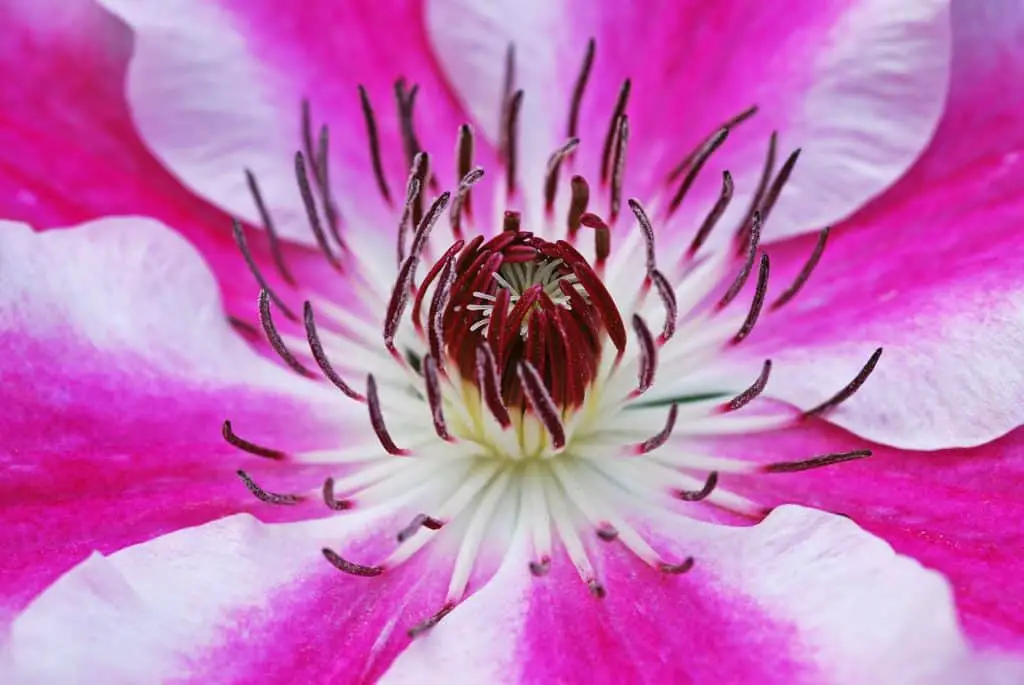Some links in the post are affiliate links and I get a commission from purchases made through some links found in the post.
To find plants that can thrive in shady places alongside having shallow roots is quite challenging. They can either be climbers or succulents.
Climbers are highly versatile and add a new dimension to your garden. They have a distinct attractiveness due to their great variety of gorgeous blooms and appealing foliage.
Some climbers have an incredible smell and when planted near a path or patio, can be enjoyable when you are gardening or taking a stroll around it.
 Providing a flush of color, these are perfect for your balconies. They can also add height and serve as filler plants.
Providing a flush of color, these are perfect for your balconies. They can also add height and serve as filler plants.
They can be excellent resources for garden wildlife by attracting different bees and butterflies and most importantly, by offering shelter for a variety of species, particularly birds.
Most climbers can be grown in containers but some are better suited than others. Some are however handiest with a massive pot.
What are the Best Climbing Plants For Shallow Soil?
Following are the best climbing plants that have shallow roots which make them great for shallow soil:
1) Clematis
Clematis is a popular climber with unique blooms in a variety of colors such as blues, pinks, whites, reds, and purples.
It can tolerate partial or full sun exposure. They need moist but well-drained soil with neutral to alkaline pH to grow.
They need average amounts of water. Clematis usually blooms in late spring or summers (early, mid, late).
Pros:
Small-growing clematis is ideal for container gardening since they are compact and blossom while young.
They are ideal for adding vertical height and flair to any container garden. They are easy to grow and require low maintenance.
Cons:
Large growing clematis has lace-like roots with dramatic scented flowers making them prone to wilting, caused by one or more fungi.
Clematis climb by winding their leaf stalks around supports; therefore, some type of support is required.
Tips:
Clematis are long-lived plants that dislike being relocated, so select your planting location carefully.
2) Periwinkle
There are around 30 distinct kinds of this plant, each with a unique sort of leaf and bloom color.
It grows as a ground cover plant, reaching heights of 2 to 3 feet and widths of the same size.
Containers and hanging baskets can assist to highlight their lovely blooms. It thrives in warmer settings such as the tropics or the south.
Pros:
Because the Periwinkle is resistant to deer, it can help safeguard the other plants in your garden.
It can also withstand prolonged periods of drought and heat. Growing periwinkle, once established, will likely shade out future weed growth.
Cons:
Periwinkle is commonly grown as a ground cover so it rarely grows taller than 4 inches (10 cm.). After planting, periwinkle maintenance may need the eradication of tall weeds in the vicinity.
Tips:
Planting near other specimens in the flower bed or garden is not recommended since it may overwhelm and choke out valuable plantings.
3) English Ivy (Anne Marie)
English ivy cultivars are the most common type of ivy grown in homes. It is one of the best climbers and it has medium-sized grey-green leaves with creamy margins.
The English Ivy is a full-sun, part shade to full shade lover. It is best grown in medium moisture well-drained soil.
Growing ivy indoors is simple as long as you feed the plant with what it requires. The most crucial aspect of indoor ivy plant maintenance is lighting.
Pros:
It is a low-maintenance plant with evergreen characteristics. It may make an excellent bright-light houseplant.
This plant is not picky about soil and may thrive in a variety of environments. Its adaptability to all positions makes it a good choice for novices.
Cons:
English ivy escapes effectively from home nurseries. Regardless of whether you develop ivy in pots, which may appear to be protected, birds can move the seeds for some miles.
English ivy can likewise harm structures when the rootlets append themselves.
The plants can stick so aggressively that they eliminate paint and can even penetrate through window housings within the structure.
Tips:
The plant prefers moist air but not too much of moist soil. So, bear in mind the air humidity while choosing a spot to plant.
4) Virginia Creeper
A fast-growing plant, Virginia creeper (Parthenocissus quinquefolia) is an excellent choice for any soil and light.
It is a woody-stemmed deciduous perennial vine. Its leaves contain five leaflets and change color from summer to fall foliage.
It blooms with green inconspicuous flowers. During prolonged periods of drought, the plant may require additional water, though it can endure brief periods of dryness.
Pros:
In the autumn, the leaves of Virginia Creeper turn a lovely red color. It may be grown in a pot or can be used as a ground cover.
It can enhance your privacy when grown on a balcony or when it grows along the walls.
Cons:
Its vigorous growth may require regular trimming.
This plant has berries that can be extremely toxic and fatal to humans. As it contains a certain amount of oxalic acid, it may cause skin irritation.
Tips:
When growing a Virginia creeper for covering a structure, you should place a trellis about 2-3 feet away from a wall.
This allows air circulation between the vine and wall and provides room for tending the vine.
5) Climbing Hydrangea
 Depending on which of the over 80 varieties it is, these shrubs can be either evergreen or deciduous.
Depending on which of the over 80 varieties it is, these shrubs can be either evergreen or deciduous.
Hydrangeas can reach a height of 3 feet to 15 feet. Some cultivars even tend to climb.
It is shade tolerant and grows best in partially shaded areas. Their large flower clusters bloom in brilliant shades of white, pink, red, purple, or blue from early spring to late summer.
Pros:
It has an extended bloom period and it is good for a screen. This flowering vine, unlike other climbers, produces horizontal branches with even more blooms and a thicker cover of glossy green leaves.
No regular pruning is needed.
Cons:
If ingested, can cause mild stomach upset.
Tips:
Since this plant is a nutrient rich soil lover, using compost can enhance its growth.
Best Climbing Plants for Shallow Soil in Full Sun
T following are some of the climbing plants that would be best for shallow soil and full sun.
1) Blue Morning Glory
It is one of the fastest-growing vine plants that can make a lovely addition to gardens.
Morning glories prefer full sun but can also tolerate very light shade.
Morning glory plants have gorgeous funnel-shaped flowers in a variety of colors, including white, red, blue, purple, and yellow, as well as heart-shaped leaves.
2) Bougainvillea
Bougainvillea in the garden provides year-round green foliage and dazzling blooms in the summer.
They are drought tolerant and can grow in nearly any well-draining soil under sunny conditions.
3) Trumpet vine
Trumpet vine (Campsis radicans) is a fast-growing perennial vine that is also known as trumpet creeper.
Growing trumpet vine creepers is simple. Trumpet vines can be invasive but easily maintained with proper care and trimming.
Hummingbirds love the trumpet vine bloom because it attracts them. The tubular flowers are gorgeous and range in hues from yellow to orange or red.
It blooms throughout the summer and into the fall. Though those planted in shady areas may see limited blooming.
4) Star Jasmine
Star Jasmin, also known as confederate jasmine, is a fabulous plant with fragrant white flowers and provides a great cover-up.
In addition to ground cover, it also vines along trellises. Its care is very minimal so it can grow among a variety of plants. Once it gets going, it blooms the most in spring.
Best Climbing Plants for Shallow Soil in Shade
The following are the best climbing plants for shallow soil in shade.
1) Climbing Roses
Climbing roses are breathtaking additions to practically any garden. Inferring the exemplary “cabin garden” look, these roses can be prepared to move up lattices, fences, and dividers.
Ramblers are the liveliest climbing rose assortments. Their long sticks can develop as much as 20 feet (6 m.) in one year, and the blossoms show up on bunches.
They can easily be grown in shady places.
2) Honeysuckle Vines
Honeysuckles are heat-lenient and alluring in any nursery.
A honeysuckle plant is an incredible expansion to any scene and will draw bountiful natural life with its sweet, yellow to splendid red blooms.
3) Barrenwort
Barrenwort (Epimedium grandiflorum) is an uncommon herbaceous plant. It is a shade-loving plant. It is native to the Mediterranean and temperate East Asian regions.
These little plants are resistant to deer and are also drought tolerant. Barrenwort flowers are beautiful 4-petaled blooms that come in a variety of hues and hang in racemes.
Final Thoughts
 Climbing plants can be a beautiful addition to your gardens, outdoors and indoors.
Climbing plants can be a beautiful addition to your gardens, outdoors and indoors.
They can enhance the beauty of your porches adding richness and depth to your balconies. Shade-loving climbing plants are perfect to decorate your lifeless nooks.
They reduce stress, improve air quality, and can also help reduce background noise.
They come with a lot of options, both as ground covers or for vining up the poles fixed in the pots. We have listed many climbers to help you in your selection.
Bear in mind that spring is the best season to grow your clematis, which looks beautiful on your pergolas, summertime is best for star jasmine, honeysuckles and roses.
Fall and winter are the seasons for Virginia creepers and Ivy.
Before you go, here are some more related articles I encourage you to read below to help solve more of your gardening issues:
Can Philodendron Grow in Shade
What are the Best Trees to Plant Near Your House for Shade
How Much Sun Does Lettuce Need
Does a Monstera like Direct Sunlight
About the Author:
Saad Ansar
Saad is an avid gardener himself and is a great lover of plants, animals, photography, & people. Currently, he is focused on photographing indoor plants & captioning beautiful outdoor sceneries. He writes and rewrites in-depth articles on nature and science.

